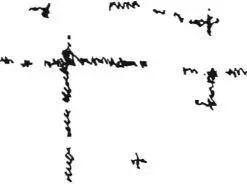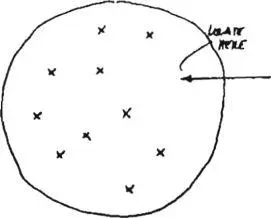Christopher alexander - A pattern language
Здесь есть возможность читать онлайн «Christopher alexander - A pattern language» весь текст электронной книги совершенно бесплатно (целиком полную версию без сокращений). В некоторых случаях можно слушать аудио, скачать через торрент в формате fb2 и присутствует краткое содержание. Жанр: Прочая научная литература, на английском языке. Описание произведения, (предисловие) а так же отзывы посетителей доступны на портале библиотеки ЛибКат.
- Название:A pattern language
- Автор:
- Жанр:
- Год:неизвестен
- ISBN:нет данных
- Рейтинг книги:3 / 5. Голосов: 1
-
Избранное:Добавить в избранное
- Отзывы:
-
Ваша оценка:
- 60
- 1
- 2
- 3
- 4
- 5
A pattern language: краткое содержание, описание и аннотация
Предлагаем к чтению аннотацию, описание, краткое содержание или предисловие (зависит от того, что написал сам автор книги «A pattern language»). Если вы не нашли необходимую информацию о книге — напишите в комментариях, мы постараемся отыскать её.
A pattern language — читать онлайн бесплатно полную книгу (весь текст) целиком
Ниже представлен текст книги, разбитый по страницам. Система сохранения места последней прочитанной страницы, позволяет с удобством читать онлайн бесплатно книгу «A pattern language», без необходимости каждый раз заново искать на чём Вы остановились. Поставьте закладку, и сможете в любой момент перейти на страницу, на которой закончили чтение.
Интервал:
Закладка:
Let us now consider the global nature of a web which has this character. In present cities, shops of similar types tend to be clustered in shopping centers. They are forced to cluster, in part because of zoning ordinances, which forbid them to locate in so-called residential areas; and they are encouraged to cluster by their mistaken notion that competition with other shops will serve them better than roughly equal sharing of the available customers. In the “peoples” web we are proposing, shops are far more evenly spread out, with less emphasis on competition and greater emphasis on service. Of course, there will still be competition, enough to make sure that very bad shops go out of business, because each shop will be capable of drawing customers from the nearby catch basins if it offers better service—but the accent is on cooperation instead of competition.

| C |
|---|
 |
| t'•4* i |
- *
| * 4 | |
|---|---|
 |
y |
 |
| i Vi |
*
 |
| The existing web. |
I*
The peoples’ web.
106
To generate this kind of homogeneous people’s web, it is only necessary that each new shop follow the following three-step procedure when it chooses a location:
1. Identify all other shops which offer the service you are interested in, locate them on the map.
2. Identify and map the location of potential consumers. Wherever possible, indicate the density or total number of potential consumers in any given area.
3. Look for the biggest gap in the existing web of shops in those areas where there are potential consumers.

* 4 -
A-

The gap in services.
Two colleagues of ours have tested the efficiency and potential stability of the webs created by this procedure. (“Computer Simulation of Market Location in an Urban Area,” S. Angel and F. Loetterle, CES files, June 1967.) They chose to study markets. They began with a fixed area, a known population density and purchasing power, and a random distribution of markets of different sizes. They then created new markets and killed off old markets according to the following rules. (1) Among all of the existing markets, erase any that do not capture sufficient business to support their given size; (2) among all of the possible locations for a new market, find the one which would most strongly support a new market; (3) find that size for the new market that would be most economically feasible; (4) find that market among all those now existing that is the least economically feasible, and erase it from the web; (5) repeat steps (2) through (4) until no further improvement in the web can be made.
Under the impact of these rules, the random distribution of
107
TOWNS
markets at the beginning leads gradually to a fluctuating, pulsating distribution of markets which remains economically stable throughout its changes.
Now of course, even if shops of the same- kind are kept apart by this procedure, shops of di~fjerent kinds will tend to cluster. This follows, simply, from the convenience of the shopper. If we follow the rules of location given above—always locating a new shop in the biggest gap in the web of similar shops—then, within that gap there are still quite a large number of different possible places to locate: and naturally, we shall try to locate near the largest cluster of other shops within that gap, to increase the number of people coming past the shop, in short, to make it more convenient for shoppers.
The clusters which emerge have been thoroughly studied by Berry. It turns out that the levels of clustering are remarkably similar, even though their spacing varies greatly according to population density. (See Geography of Market Centers and Retail Distribution , B. Berry, Englewood Cliffs, New Jersey: Prentice-Hall, Inc., 1967, pp. 32—33.) The elements in this web of clustering correspond closely to patterns defined in this language.
Therefore:
When you locate any individual shop, follow a three-step procedure:
1. Identify all other shops which offer the service you are interested in; locate them on the map.
2. Identify and map the location of potential consumers. Wherever possible, indicate the density or total number of potential consumers in any given area.
3. Look for the biggest gap in the existing web of shops in those areas where there are potential consumers.
4. Within the gap in the web of similar shops, locate your shop next to the largest cluster of other kinds of shops.
108
gap

shops of same type
We estimate, that under the impact of this rule, a web of shopping with the following overall characteristics will emerge:
| MAGIC OF THE CITY ( io) | Population300,000 | Distance Apart (Miles)10* |
| PROMENADES (3 I ) | 50,000 | 4* |
| SHOPPING STREETS (32) | 10,000 | 1.8* |
| markets of many shops(46) | 4,000 | 1.1* |
| CORNER GROCERIES (89) | 1,000 | 0.5* |
* These distances are calculated for an overall population density of 5000 per square mile. For a population density of D persons/ square mile, divide the distances by \/D/50oo. . . .
109
20 MINI-BUSES*
. . . this pattern helps complete the local transport areas (ii) and the web of public transportation (16). The local transport areas rely heavily on foot traffic, and on bikes and carts and horses. The web of public transportation relies on trains and planes and buses. Both of these patterns need a more flexible kind of public transportation to support them.
Public transportation must be able to take people from any point to any other point within the metropolitan area.
Buses and trains, which run along lines, are too far from most origins and destinations to be useful. Taxis, which can go from point to point, are too expensive.
To solve the problem, it is necessary to have a kind of vehicle which is half way between the two—half like a bus, half like a taxi—a small bus which can pick up people at any point and take them to any other point, but which may also pick up other passengers on the way, to make the trip less costly than a taxi fare.
Читать дальшеИнтервал:
Закладка:
Похожие книги на «A pattern language»
Представляем Вашему вниманию похожие книги на «A pattern language» списком для выбора. Мы отобрали схожую по названию и смыслу литературу в надежде предоставить читателям больше вариантов отыскать новые, интересные, ещё непрочитанные произведения.
Обсуждение, отзывы о книге «A pattern language» и просто собственные мнения читателей. Оставьте ваши комментарии, напишите, что Вы думаете о произведении, его смысле или главных героях. Укажите что конкретно понравилось, а что нет, и почему Вы так считаете.












